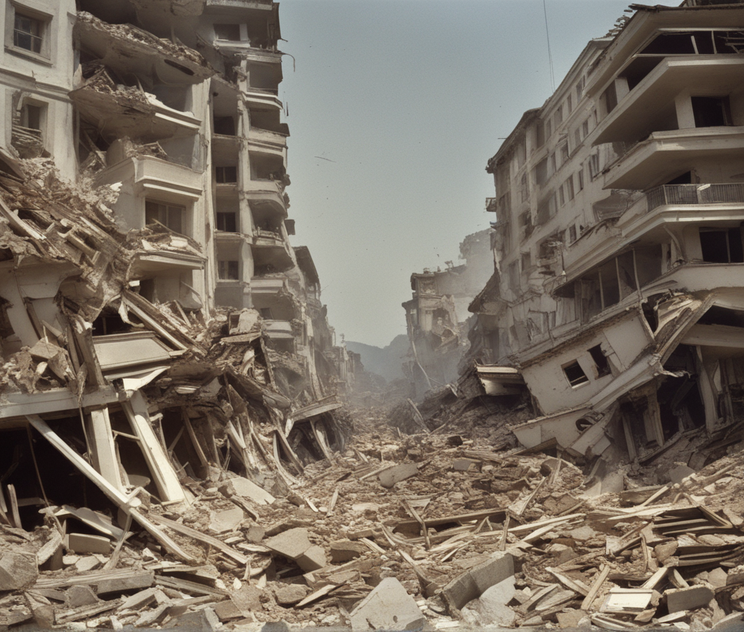In this composition, we will embark on a trip deep into the witching
realm of earthquakes, slipping light on the intricate drugs that govern these admiration-inspiring natural circumstances. Our charge is to give you with a profound and comprehensive understanding of earthquakes, enabling you to grasp the abecedarian principles behind.
The Dynamic Nature of Our Earth
Earthquakes, frequently described as nature’s fury, are a direct consequence of the Earth’s dynamic and ever-evolving nature. Our earth is in a constant state of flux, with colossal monumental plates beneath the Earth’s face continuously shifting, colliding, and interacting. These massive plates, suggesting interlocking mystification pieces, come together to form the Earth’s crust. still, it’s pivotal to fête that these geological campaigns are anything but static; they’re constantly in stir, and this ceaseless movement can crown in seismic exertion that reverberates across the Earth’s face.
The monumental Plate proposition
One of the abecedarian propositions that interpret the riddle of earthquakes is the monumental plate proposition. This groundbreaking proposition presuppositions that the Earth’s crust is divided into several immense plates that putatively float on the semi-fluid mantle lying beneath them. The junctures or boundaries where these colossal plates interact are the axes of utmost seismic exertion. Astronomically, there are three primary orders of plate boundaries, each with its distinctive characteristics.
Divergent Boundaries
Divergent boundaries are locales where monumental plates are moving down from each other. As these plates gradationally separate, magma from the mantle ascends to enthral the vacated space, eventually giving rise to the conformation of new crust. This intricate process can sometimes lead to stormy eruptions and, in turn, seismic tumblers.
Coincident Boundaries
Coincident boundaries manifest when two monumental plates are clustering or moving toward each other. As these plates collide, an immense build-up of pressure ensues, causing substantial distortion in the Earth’s crust. Over time, this accumulated stress is catastrophically discharged in the form of an earthquake.
Transfigure Boundaries
Transfigure boundaries are the locales where monumental plates slide horizontally once each other. The disunion generated between these plates can stymie smooth movement, performing in the accumulation of stress along the boundary. When this pent-up stress is suddenly unleashed, it gives rise to the seismic shockwaves characteristic of earthquakes.
The Vital part of Seismic swells
Seismic swells serve as the lifeblood of an earthquake, responsible for the earth-shattering tumblers we witness. These swells cut through the Earth’s subsurface, setting the ground to stir. Two primary types of seismic swells are at the heart of this miracle.
Primary swells(P- swells)
P- swells are famed for their inconceivable speed, frequently being the first to reach the Earth’s face during an earthquake. They parade the unique capability to travel through solids, liquids, and feasts, earning them the moniker” compressional swells.” The stir convinced by P- swells resembles the reverse- and- forth oscillation, akin to the way sound propagates through the air.
Secondary swells(S- swells)
S- swells, in discrepancy, parade a slower pace compared to P- swells and have the capability to propagate solely through solid accoutrements . Their stir is characterized by a side- to- side oscillation, performing in the persuading and shaking that are generally associated with earthquakes. Unlike P- swells, S- swells can not cut through liquids or feasts.
Quantifying Earthquake Intensity
The quantification of an earthquake’s intensity is achieved through the application of scales similar as the Richter scale or the moment magnitude scale(MW). These scales assign a numerical value to the earthquake’s energy, furnishing a means to gauge its impact. While the Richter scale, developed in the 1930s, remains a well-honored metric, the moment magnitude scale is extensively regarded as a more accurate measure for gauging the intensity of substantial earthquakes.
The Quest for Earthquake Prediction
Despite significant advancements in comprehending the drugs of earthquakes, the capability to prognosticate precisely when and where they will do remains a fugitive bid. Scientists employ an array of sophisticated instruments, including seismographs and GPS technology, to cover ground movements and descry early warning signs. Still, the complications of earthquake vaticination are redoubtable, and point vaticinations continue to challenge the scientific community.
Earthquakes are an inexorable consequence of the Earth’s constantly changing geography and the ceaseless cotillion of monumental plates. An in- depth appreciation of the underpinning drugs of earthquakes, including the vital part of seismic swells and the styles used to gauge their intensity, is of consummate significance. Similar knowledge not only contributes to our scientific understanding but also plays a vital part in preparedness for regions susceptible to seismic exertion. As we persist in our disquisition of our earth’s mystifications, it’s peremptory upon us to admit that while we can not avert earthquakes, we can take visionary measures to alleviate their impact on our lives. Stay well-informed, prioritize safety, and be prepared to defy the capricious forces of nature.



Leave a Reply